2015
The German sun-machine is on
Physicists of the Max-Planck Institute for Plasma Physics working on the new Wendelstein reactor 7-X in Greifswald (Germany) succeded in producing a plasma with the help of nuclear fusion – it lasted all one-tenth of a second and reached a temperature of one million degrees Celsius.
The tangible proof of earthquake lights

"Something unusual seems to be coming at us from the stars..."
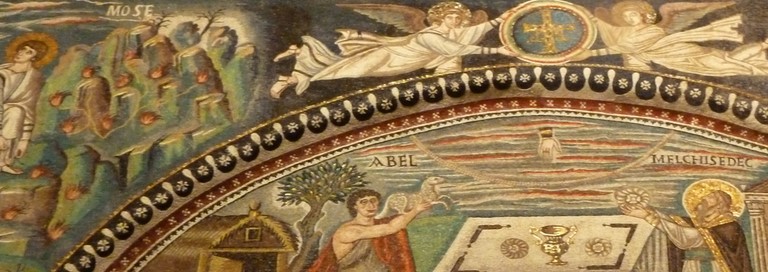
Dr Ruth Dwyer, professor of History of Arts and Film at Mc Master's University in Canada, has discovered in the mosaics of Ravenna a contemporaneous visual record of the 536 AD comet and ensuing catastrophes which attended the early part of the reign of emperor Justinian. This comet was none other than Halley's, a piece of which smashed into the Indian or Pacific Ocean.
Alfred de Grazia: Man's Divine Mirror

Doggerland to be digitally repopulated
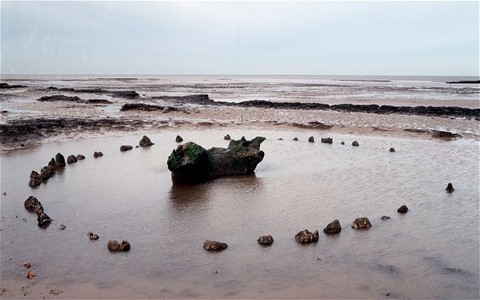
Archaeologists, molecular biologists and computer scientists will work together to digitally re- construct a prehistoric country approaching the size of Ireland that, following climate change after the last Ice Age, was covered by rising sea levels and now lies beneath the North Sea.
Hot explosions, cool Sun
Earliest modern European had a close Neandertal ancestor
Neandertals contributed on average one to three percent to the genomes of present-day Eurasians. Researchers have now analyzed DNA from a 37,000 to 42,000-year-old human mandible from Oase Cave in Romania and have found that six to nine percent of this person’s genome came from Neandertals, more than any other modern human sequenced to date. Because large segments of this individual’s chromosomes are of Neandertal origin, a Neandertal was among his ancestors as recently as four to six generations back in his family tree...
Go to article
A hardware store for the Neandertal
Biface, scrapers, borers and piercer – the Neandertals did not have a very large tool kit. But it appears that they were very discriminating when it came to chosing stones. Quarzite had proven itself to them to be especially strong and hard-wearing. And quartzite is precisely what was found - and is still to be found – on the Ravensberg mountain in Troisdorf, near Bonn (Germany.)
Go to article
Nepal earthquakes associated with disturbances in the ionosphere
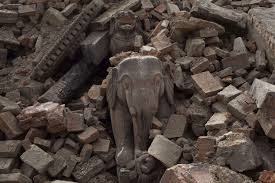
The earthquakes of April 25, 2015, of an intensity 7.8 on the Richter Scale, and of May 12, 2015, of an intensity of 7.3, brought widespread destruction and caused close to 10,000 deaths. They might help us to develop early warning systems. The behavior of the atmosphere and of the ionosphere prior to the earthquakes have been analyzed by Dmitry Ouzounov, Sergey Pulinets and Dmitry Davidenko, with remarkable results.
Go to article
550,000 year old human tooth found in Tautavel, France
Older by 100,000 years than the famous Tautavel Man, a 550,000 year old human inciser has been found on the same site by two young French volunteers, 16 and 20, on a Summer dig.
Go to article
C02 emissions are ruining C14 readings
CO2-emissions from automobiles, factories and power-stations are robbing scientists of an important instrument which they use to determine the age of objects. The Radiocarbon dating method is losing its validity, announces Heather Graven of Imperial College in London.
Go to article
Blood-red flint tools - souvenirs of Doggerland?
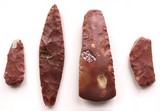
Archaeologists wonder about the blood-red stone-tools from the North Sea Island of Helgoland. The oldest finds are 12,000 years old – and were dicovered over 300 km away from the island.
Go to article
Gunnar Heinsohn's latest: How come so many Roman elements made it into the Viking Age?
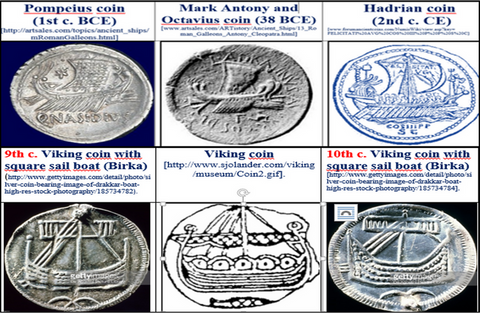
How could Scandinavian and Baltic peoples of Antiquity and Late Antiquity fail to adopt sails, ports and breakwaters when there were countless experts from Europe who could teach them, and even low-value Roman coins spread throughout their territories? How could these peoples, after 700 CE, become the world‘s uncontested master seafarers when – after the lethal and irreversible fall of Roman civilization – there was nobody left to teach them? How could they understand classical Latin and create items of Antiquity and Late Antiquity – which they imitated perfectly, right down to the chemical fingerprints of Roman paints and glass pastes – when they did not even have ancient strata beneath their habitats from which they could dig up and copy the material culture of Rome? (.../...)
Go to article
Drought-control and weather management through ionization systems
Sergey Pulinets, a leading scientist in the field of monitoring atmospheric precursors of earthquakes has derived from this specialty an understanding of the effects of atmospheric ionization on the weather, and is promoting the use of new technologies of ionization systems to control precipitation and, especially, to overcome droughts, such as are presently striking California.
Go to article
Neanderthal jewels and fashions (2)

The Spanish Neanderthalers evidently produced the dyes out of red and yellow pigments, which they must have collected intentionally. One especially aesthetic container used a colored spondylus gaederopus shell, of a kind which, much later, during the late Stone Age, would have a widespread use as a means of payment. Already Neanderthals seem to have been attracted to their many colors and ribbed surfaces. Scientists surmise that dye which they contained were used for possibly large body paintings (..../...)
Go to the article
Neanderthal jewels and fashions (1)

Recent studies and discoveries credit the Neanderthals with the making of the oldest jewels known and with a passion, wide-spread over space and time, for wearing bird feathers, preferably dark colored. A set of eight white-tailed eagle talons, formerly linked in a chain and worn as ornament, dated to 130,000 years ago, have been found in Croatia.
"These talons provide multiple new lines of evidence for Neandertals’ abilities and cultural sophistication. They are the earliest evidence for jewelry in the European fossil record and demonstrate that Neandertals possessed a symbolic culture long before more modern human forms arrived in Europe."
Go to the article
Moon, Mars, impacts and collisions

Go to article
Read: Alfred de Grazia: The ruined face of a classic Beauty - Homer, Velikovsky and Moon rocks from the "Apollo" missions (1984)
Impact melted half of Mars -The Northern side is flat, the Southern side is embossed with mountains and volcanoes: the irregularity of the surface of Mars has long been a mystery to scientist. Now there a possible explanation is emerging. -
Go to article
Are super-magnetic fields competing companions of Black-Holes?
Scientists from the University of Göttingen in Germany have detected for the first time the existence of very strong magnetic fields immediately next to a supermassive Black Hole. Thanks to observations using the Hubble space telescope, among other instruments, they were able to demonstrate the existence of magnetic fields of 200 million Gauss very close to the central Black Hole of a quasar distant by four billion light-years. To give an order of comparison: magnetic fields on Earth are measured in the range of one Gauss.
Read more
A Celtic tomb of the 5th cent. BC excavated in Champagne
Since October 2014, archaeologists of the French INRAP (National Institute for Preventive Archeaological Research) have been excavating a 5th Century BC Celtic royal tomb near Troyes. Finds so far have been spectacular.
Go to article
Gunnar Heinsohn: in a nutshell - the revised chronology of the 1st Millennium AD
Click here for the document and pdf
Alfred de Grazia: The Search for Lost Instinct

Alfred de Grazia on his beach in Naxos (1992)
Identity and identification begin with the question of the self or ego. "Everyone is to himself that which he calls self," wrote John Locke, in discussing the idea of a person. The self is "an object to itself," said G. H. Mead. The reflexive form reveals "that which can be both subject and object." This is what distinguishes man from animal, he argued, rather than the alleged possession of a mysteriously endowed soul. (.../...)
From: Homo Schizo Two - read more
Gunnar Heinsohn's latest: Bulgaria's early medieval cities, Pliska and Preslav - were they really built to resemble 700-year older Roman cities?
Go to article
Stars in Collision
345 years after the sudden appearance of a „new star“ observed by 17th century European astronomers and visible with the naked eye, astronomers at Eso, the European Southern Observatory in Chile and the Max-Planck Institute for Radioastronomy communicated that the phenomenon then observed had not been a „nova,“ as had been surmised for a long time, but that it had been caused by a massive and cataclysmic collision between two stars. (.../...)
Go to article
The Pyramids of Giza, the Belt of Orion and Three Volcanoes on Mars, by Emilio Spedicato
Here we consider an alternative approach to the one of Bauval and Gilbert, who claimed that the three Giza pyramids are aligned in similarity to the three main stars of the Orion belt. We show that there exists a better fitting alignment with certain three volcanos on Mars. Such volcanos were visible from Earth between 7000 and 700 BC. During that period, following ideas of Patten, Ackerman and this author, Mars approached our planet every 54 years. Our proposal is supported by the etymology of the word “pyramid” and by the existence of 54 niches, 27 on each side, along the stairs of the Great Gallery in the Cheops pyramid.
Go to article
Mithras, Jesus and Josephus Flavius, by Flavio Barbiero
Yet there is absolute evidence that the so called “cult” of Mithras, in Rome, was not a religion, but an esoteric organization, with several levels of initiation, which from the oriental religion had borrowed only the name and a few exterior symbols. For what concerns contents, scope and operative procedures, however, the Roman Mithras had nothing in common with the Persian god...
Go to article
Water on Earth is older than the Sun
New calculations have shown that a large part of water on Earth indeed originates in this molecular cloud. 30 to 50 percent of Earth’s water, declare scientists around Ilsedore Cleeves at the University of Michigan in Ann Arbor, is older than the sun itself.
Go to the article
Cadmus and Viracocha, by Enrico Mattievich (part two)
Is there an Andean civilizing hero in pre-Colombian traditions who corresponds to Cadmus? If such a figure did exist, he would form part of the mythical and religious tales of Viracocha. (.../...)
Go to the article
Cadmus and Viracocha, by Enrico Mattievich (part one)
In September 1969, an extensive article published in the Rio de Janeiro newspaper O Globo, revived a dormant topic in Brazil: the prehistoric visit of Phoenician navigators to the Brazilian coast. The story quoted Professor Cyrus Gordon, of Massachusetts’ Brandeis University, who believed in the possibility of these voyages. He visited Rio de Janeiro, interested in the Phoenician inscriptions which had been found in Brazil. Professor Gordon, a recognized Orientalist, had made important contributions to the study of the texts discovered in the royal library of Ugarit. These texts, inscribed on clay tablets, lay buried for more than 3,000 years, until their discovery by Claude Schaeffer, in 1929, at Ras Shamra, on the Syrian coast. (.../...)
Go to the article
Lost forest of Doggerland found by divers under the North Sea
A British diver, Dawn Watson, who runs a Marine Conservation Society survey program called Seasearch in East Anglia, has discovered the remains of a mighty Doggerland oak forest, quite possibly flattened by Störegga tsunami, lying on the ocean floor, less than half a mile off the coast of Norfolk.
Go to the article
Gunnar Heinsohn's latest: Sarmatians, Huns and Khazars - were they one and the same Confederation?
The origin of the 8th-10th c. Khazars is hidden in obscurity, though they are also called “Huns“ (by Theophanes the Confessor [758/60-817/818 CE] or by Moses of Kalankatuk [10th c.]). The ancestors of this ubiquituously tribute-collecting power are even believed to “have belonged to the empire of the Huns“ (JVB 2008), although they had to wait another mysterious 300 years before they could actually rule the Hunnic realm: “Very little [was known] about the Khazars – about their traditions, their funerary rites, their culture" until, in one of their fortresses, Atil, the excavators have found Hunnic-like “huts similar to yurts, which are characteristics of Khazar cities..."
Go to the article
Doggerland died at the end of Fall
...The decisive clues for the mesolithic mass death are mosses, especially Hylocomium splendens, known today as "glittering wood-moss," or "mountain fern moss." After the tsunamis of 8,150 years ago, they were buried under sea mud so that they remained sealed up and preserved...
Go to article
Sanchunjaton, Phoenicia and Hesiod
A reading note by Alfred de Grazia
In the 1st century AD, Philo of Byblos wrote a Phoenician History in nine volumes which he claimed was a translation into Greek from an early Phoenician writer of 1400 B.C. called Sanchunjaton, from Beirut. Philo’s work was lost, except parts of the first book, which tell a creation history remarkably similar to that of Hesiod.
Go to the article
"We contain multitudes" (3, 4 & 5)
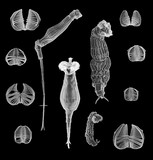
A man's inner twin becomes a father. Go to article
A small organism, bdelloid rotifer, reproduces without sex for eighty million years, and keeps genetically fit by absorbing foreign genes. Go to article
Blind woman recovers eyesight by switching personalities. Go to article

